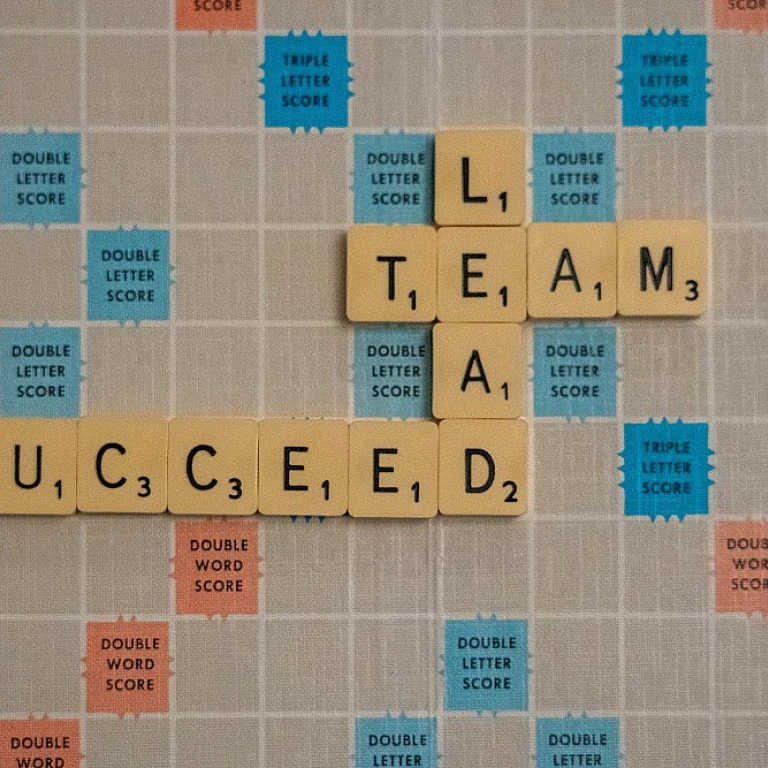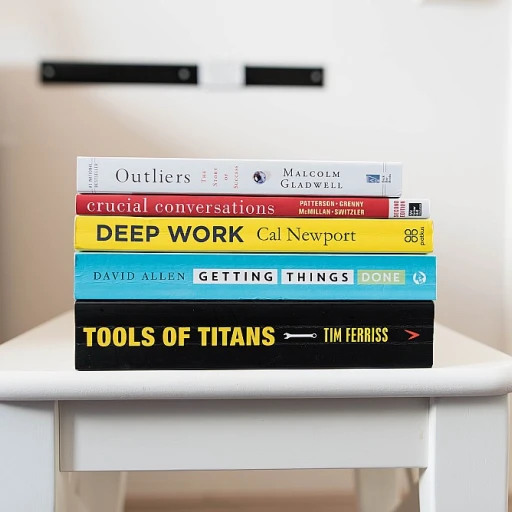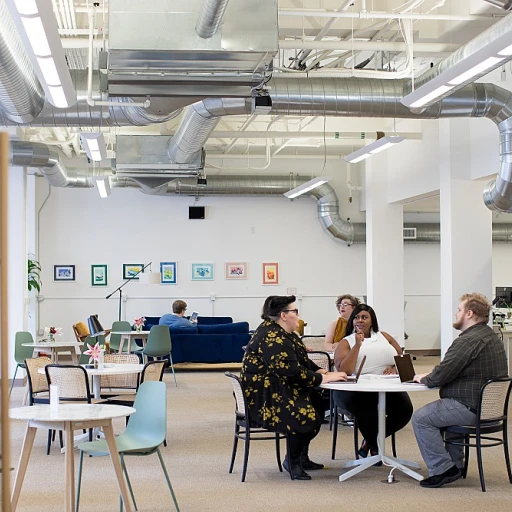
The Rise of Student-Led Publications
Empowering Youth Through Initiatives
The evolution of student-led publications in high schools has become a defining moment for many aspiring young journalists. These school journals offer a unique platform for students to hone their writing and editorial skills, often through peer-reviewed articles and open access platforms. Students are not only writing about varied subjects like social sciences and STEM but also involved in the entire process, from submission to publication, of their school journal. Understanding the importance of these activities beyond the traditional academic framework, many schools are empowering students to manage their own journals. This opportunity allows students to take charge of their high school journal, contributing original type works or engaging with editorial boards to review processes in subjects with a rolling deadline. By facilitating such student-led journal initiatives, institutions are acknowledging the potential of young minds. They recognize the ability of high school students to produce peer-reviewed volumes, whether it's the March volume focused on science, April volume on social sciences, or a comprehensive journal published in November. These publications are not just about achieving high acceptance rates; they create a culture of self-learning and commitment, often rolling with subjects beyond the curriculum. For more insights on these free research opportunities, you can explore this resource. The continuous rise of school publications showcases the dedication of editorial boards managing cost-free, open access journals. They promote a holistic approach to education by intersecting academic rigor with the practical nuances of publishing. The impact of these initiatives on students is immense, preparing them for college life ahead and enriching their academic journeys.Skills Developed Through Publishing
The Development of Vital Skills Through Student Publishing
Embarking on the journey of launching their own journals, high school students delve into a world that extends far beyond the confines of their traditional academic curriculum. This venture equips them with essential skills that are not only crucial for academic success but also highly valuable in personal development.
By participating in the creation and management of a school journal, students experience firsthand the intricacies of the publication process. They engage in various roles, from content creation to the logistical aspects of managing a publication. Acting as members of the editorial board, students gain an understanding of the editorial decision-making process, learning how to balance creativity with critical judgment.
- Communication Skills: Engaging with peers for content generation fosters effective communication. Students refine their ability to express ideas clearly and persuasively—skills that are vital in both academic and professional settings.
- Research and Analytical Skills: Reviewing and assessing the work of their peers helps students to develop analytical skills. High school students learn how to rigorously assess science journals or social science papers, a process similar to conducting a literature review.
- Time Management: With deadlines always looming, such as those in the rolling subject or the busy march volume, students are encouraged to enhance their time management skills, a competency that is equally useful in college settings.
- Teamwork: Operating as part of an editorial board reinforces collaboration. Students come to appreciate diverse perspectives, improve interpersonal skills, and learn conflict resolution through practical exposure.
Participating in a high school journal offers students a unique, hands-on experience that can lead to fulfilling achievements in both academic and personal spheres. This opportunity can even provide a gateway to more precocious opportunities, similar to esteemed publications like the Concord Review. Through these activities, students are not just engaging in a school project; they add valuable credentials in the form of published work, a noteworthy accomplishment in their academic journey.
Challenges Faced by Young Journalists
Overcoming Obstacles in Student Journalism
Embarking on the journey of student-led publications, high school students often encounter a myriad of challenges. These hurdles, while daunting, are integral to the learning process and contribute significantly to their growth as budding journalists.
One of the primary challenges is the review process. Students must learn to navigate the complexities of peer-reviewed systems, which are essential for maintaining the credibility of their work. This involves understanding the nuances of academic and social sciences, ensuring that each journal volume, whether it be the march volume or november volume, meets the high standards expected in the field.
Another significant challenge is managing the editorial board. Students must coordinate with peers to ensure that deadlines are met, especially when working with a rolling subject or deadline rolling schedule. This requires a high level of organization and communication skills, as the editorial team must work cohesively to publish each school journal on time.
The acceptance rate and cost-free nature of student publications also pose unique challenges. Students must balance the desire to maintain an open access platform with the need to uphold quality, often resulting in a rigorous selection process for each type original submission.
Moreover, the integration of technology into student publications presents both opportunities and obstacles. While technology facilitates the publication process, it also requires students to be adept at using digital tools and platforms. This technological proficiency is crucial for managing the concord review and ensuring that each april volume and january volume is accessible to a wider audience.
Despite these challenges, the experience gained through overcoming them is invaluable. It equips students with skills that are not only applicable in college but also in their future careers. For those interested in enhancing their writing skills further, crafting a daily schedule can be an effective strategy. More insights on this can be found in our guide on enhancing middle school writing skills.
The Role of Technology in Student Publications
The Digital Backbone of Student Publications
In the modern landscape of student-led publications, technology plays a pivotal role in shaping the way high school students engage with journalism. The integration of digital tools has transformed the traditional process of creating and managing a school journal, making it more accessible and dynamic.
One of the most significant impacts of technology is the facilitation of the peer review process. Platforms designed for academic publishing allow students to submit their work for review by their peers, mimicking the procedures used by professional journals. This not only enhances the quality of the content but also provides students with invaluable experience in the review process, preparing them for future academic endeavors.
Moreover, the advent of open access platforms has democratized the publication process. Students can now publish their work without the constraints of traditional publishing costs, making the process cost-free and increasing the acceptance rate of student submissions. This is particularly beneficial for those interested in STEM and social sciences, as it allows for a wider dissemination of their research and ideas.
The use of technology also extends to the management of the editorial board. Digital tools enable seamless communication and collaboration among board members, regardless of their physical location. This is crucial for meeting deadline rolling schedules and ensuring the timely release of each volume, whether it be the March, April, or November volume.
Finally, technology fosters a culture of continuous learning by providing students with the resources to explore various types of original content. From science reviews to creative writing, the possibilities are endless. As students navigate these digital platforms, they develop critical skills that are essential for both academic and personal growth, as discussed in other sections of this article.
Impact on Academic and Personal Growth
Influence on Academic and Personal Development
The journey of producing a journal by high school students can significantly influence both their academic and personal growth. As these school students embark on the process of publishing a journal, they often find themselves immersed in a world that fosters curiosity and encourages a deeper understanding of various subjects like science and social sciences.- Enriching Academic Experience: Engaging in the cycle of peer-reviewed articles, editing, and publishing provides students with a hands-on experience that complements their traditional studies. It enhances critical thinking and hones research skills, traits that are highly valued in both college and careers. Being part of an editorial board, for example, allows students to understand the complexities of deadline rolling and peer reviewing, shaping them into well-rounded scholars.
- Personal Growth: The personal development from contributing to a school journal is equally substantial. Students learn the necessary skills to communicate effectively and work collaboratively, traits that are crucial both in academic settings and in life. The sense of ownership and responsibility from managing a school journal—such as overseeing the publication of the April volume or ensuring the quality of content through an estimated acceptance rate—can greatly boost their confidence and leadership skills.
- Acceptance of Failures and Persistence: Facing the challenges of the review process, such as a low acceptance rate or the pressure of meeting the submission deadlines like those in the March volume or the November volume, teaches resilience. The iterative nature of reviewing and publishing instills an understanding of perseverance and adaptability, vital qualities for personal and professional success.
Encouraging a Culture of Continuous Learning
Fostering a Passion for Lifelong Learning
The journey of high school students creating and managing their own journals goes beyond the immediate benefits and challenges. It plants the seeds of a lifelong commitment to continuous learning, a vital aspect in an ever-evolving world. A student-led publication is more than a collection of reviews or a science journal; it represents a dynamic process of exploring and understanding a wide spectrum of subjects, from STEM to social sciences. The act of contributing to a journal high in school not only enhances their academic prowess but also introduces students to the concept of deadlines, peer review, and the editorial process. These elements are integral to college-level work and beyond, offering insights that textbooks might not fully cover.- Encouragement through Engagement: By being part of an editorial board, students engage in a continuous learning cycle, consistently updating their understanding of various topics as new articles are submitted for review.
- Exploring Diverse Disciplines: The open access nature of many school journals, such as the January volume or the April volume, allows students to delve into diverse subjects. This exposure encourages exploration and broadens intellectual horizons.
- Developing Critical Mindsets: The critical thinking required to review and edit peer-reviewed articles fosters an analytical mindset. Students learn to discern credible sources, an invaluable skill in both academic and personal contexts.
- Acknowledging Achievement: Having the opportunity to contribute to type original research pieces and see them published can be incredibly rewarding. It reinforces the value of their efforts, driving further enthusiasm for learning.












